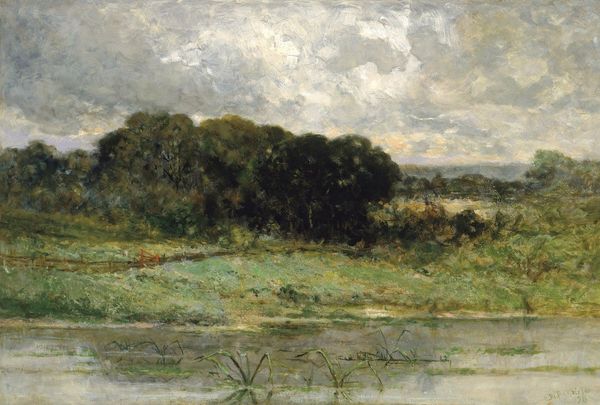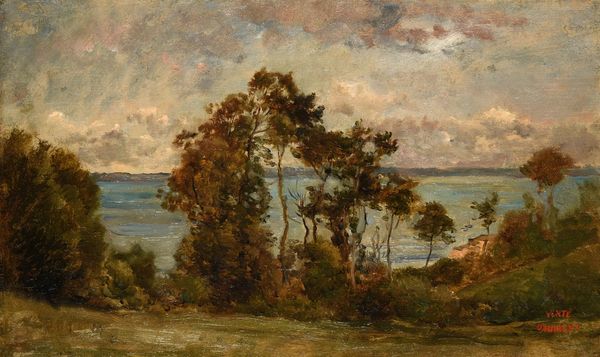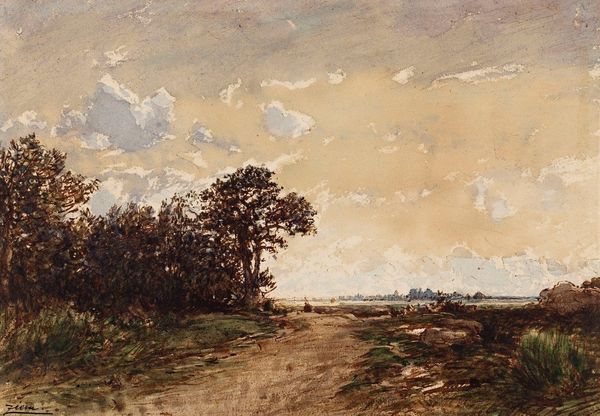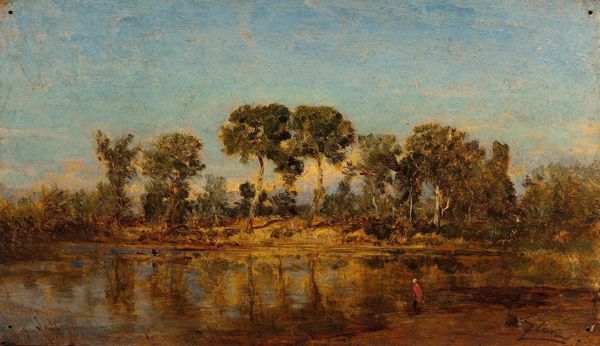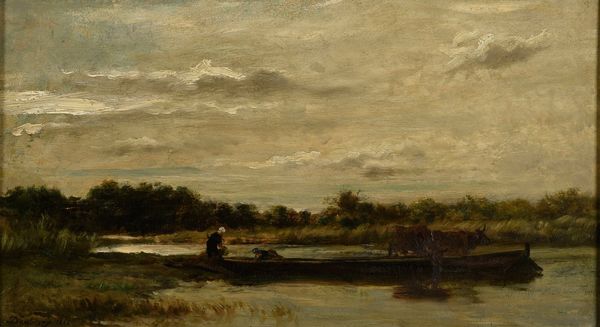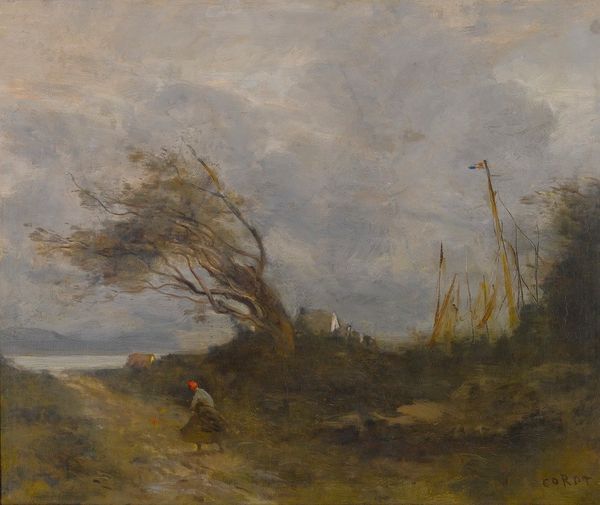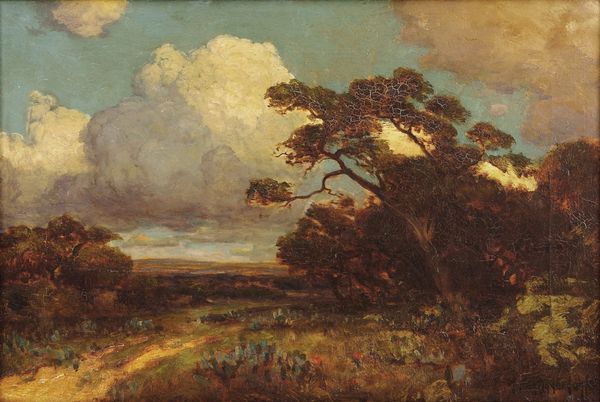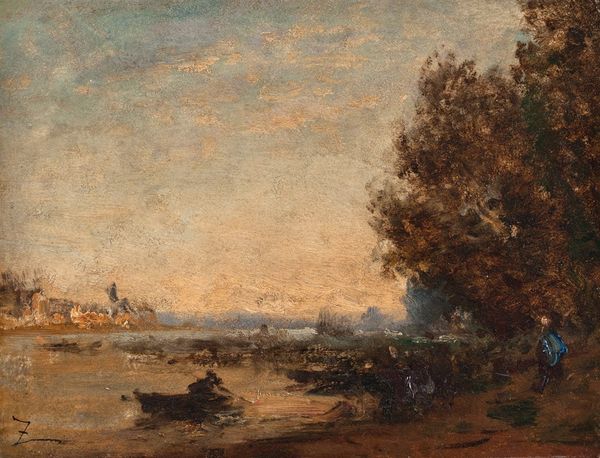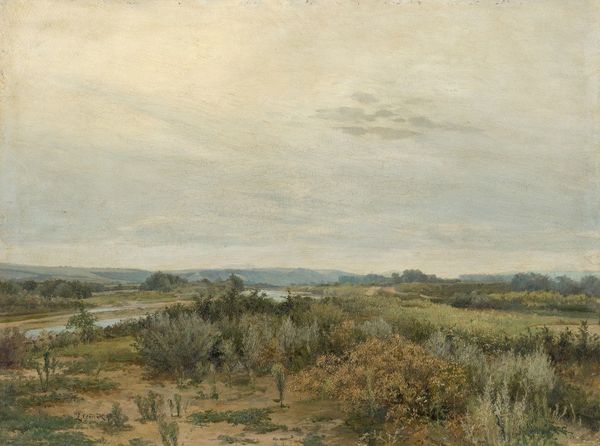
Copyright: Public Domain: Artvee
Editor: So, this is "Martigues, effet de crépuscule" by Félix Ziem, made sometime between 1850 and 1900. It's an oil painting, and there's something almost melancholic about the light... like the day's just breathed its last. What do you see in this piece? Curator: It whispers of fading light and journeys, doesn’t it? Ziem was a bit of a wanderer himself. Imagine him setting up his easel *en plein air*, trying to capture that fleeting moment. This painting, for me, is all about atmosphere. The light is filtered, almost dreamlike. What do you think that sail on the horizon might represent? Is it hope, or is it a sign of something ending? Editor: Hmm, I hadn't thought about the sail being symbolic. I guess I saw it more as part of the landscape. But that's an interesting idea. Curator: That's the magic, isn’t it? It’s easy to see the landscape, but the skill of a great artist like Ziem lies in inviting the viewer to project something of themselves into the image. To ask oneself, what does the twilight mean *to me*? Do you see echoes of Romanticism there, the drama of nature and our place in it? Or perhaps something edging toward Impressionism with those fleeting light effects? Editor: I think I'm seeing a little of both. It's like the end of Romanticism with a whisper of Impressionism's start. Curator: Exactly! Art rarely fits neatly into boxes, does it? And Ziem, he straddled that moment beautifully. He gives us not just a landscape, but a feeling – an invitation to linger between day and night, between movements, between meanings. Editor: That makes me see it differently now. I was focused on the surface, but it’s much deeper than that. Thanks for the perspective! Curator: My pleasure! It’s always more rewarding when you plunge into those emotional depths.
Comments
No comments
Be the first to comment and join the conversation on the ultimate creative platform.
